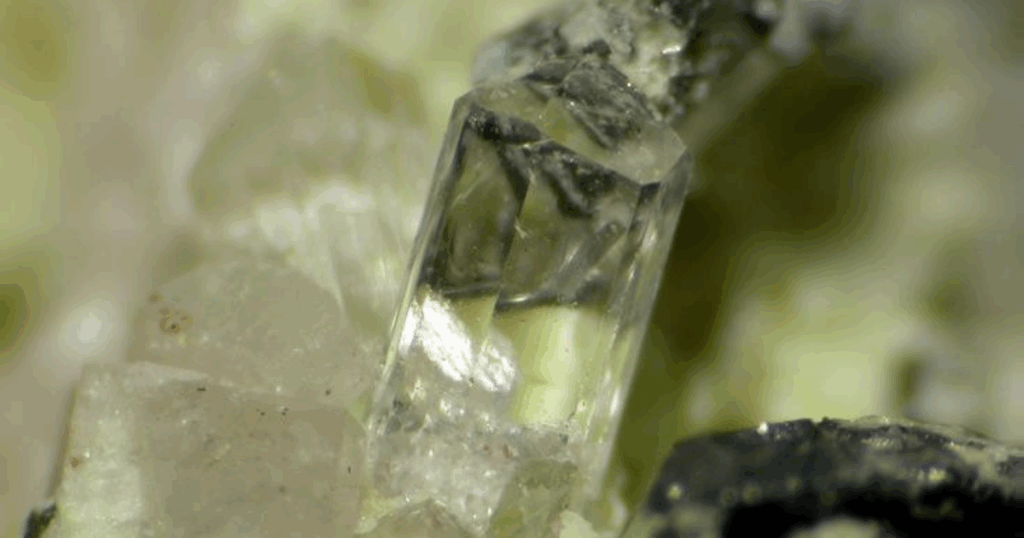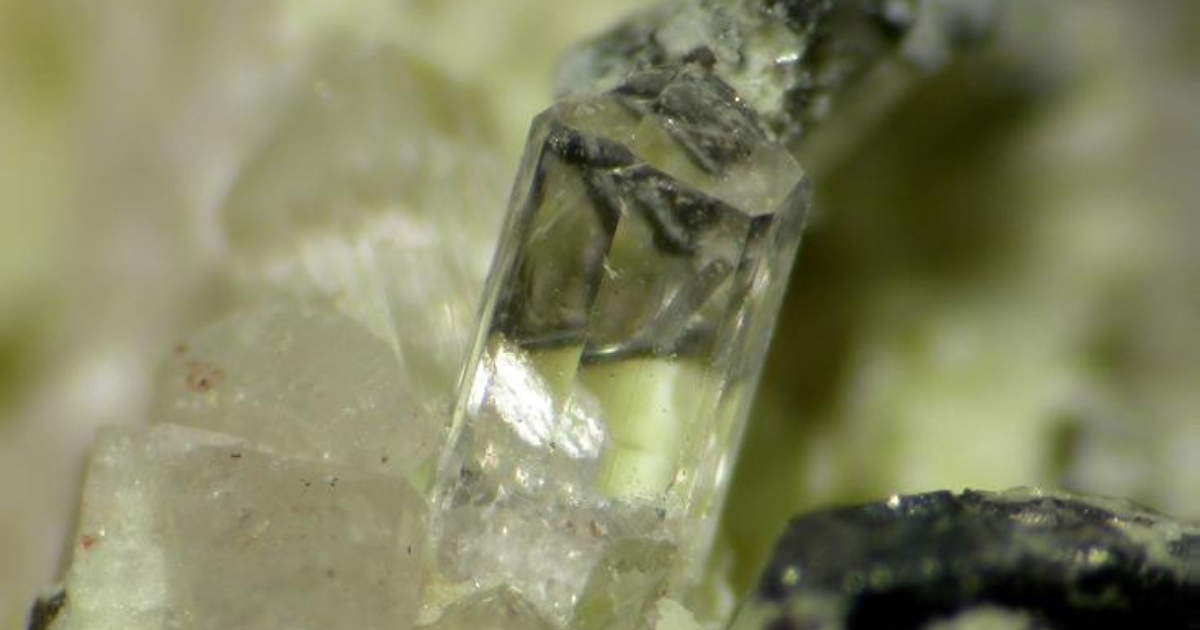
Phenacite: Unveiling the Mystical Properties and Geological Significance of this Rare Gemstone
Phenacite, a beryllium silicate mineral, is renowned not only for its rarity but also for its unique properties and geological significance. Often mistaken for quartz or other colorless gemstones, phenacite possesses a brilliance and clarity that sets it apart. This article delves into the fascinating world of phenacite, exploring its history, geological formation, physical properties, and its growing appeal in both the gemological and metaphysical communities.
A Glimpse into Phenacite’s History and Discovery
The story of phenacite begins in the early 19th century. Discovered in 1833 by Finnish-Russian mineralogist Nils Gustav Nordenskiöld, the first phenacite crystals were found in the emerald mines of the Takovaya River area in the Ural Mountains of Russia. The name “phenacite” originates from the Greek word “phenakos,” meaning “deceiver,” a fitting tribute to its resemblance to other more common minerals.
Early mineralogists struggled to distinguish phenacite from quartz, topaz, and other similar-looking stones. This initial confusion only added to the allure and mystique surrounding this relatively unknown gemstone. Over time, as scientific understanding advanced, phenacite gained recognition for its distinct chemical composition and optical properties.
Geological Formation and Occurrence of Phenacite
Phenacite typically forms in high-temperature pegmatites associated with granitic rocks. These pegmatites are formed during the late stages of magma crystallization, where residual fluids rich in beryllium, silica, and other elements become concentrated. These fluids then cool and crystallize, forming various minerals, including phenacite.
Significant phenacite deposits have been found in several locations around the world. Besides the original discovery site in Russia, notable occurrences include:
- Brazil: Minas Gerais is renowned for producing gem-quality phenacite crystals, often exhibiting exceptional clarity and size.
- Myanmar (Burma): This region is known for its phenacite associated with other rare minerals in pegmatite deposits.
- United States: Colorado and Virginia have yielded notable phenacite specimens, although gem-quality material is less common.
- Zimbabwe: Phenacite has been found in association with emerald deposits.
- Nigeria: More recently, Nigeria has become a source for gem-quality phenacite.
The geological environment in which phenacite forms contributes significantly to its unique characteristics. The presence of other minerals, such as quartz, mica, and feldspar, can influence the size, shape, and clarity of phenacite crystals. [See also: Quartz Crystal Properties and Uses]
Physical Properties and Identification of Phenacite
Phenacite boasts a set of distinctive physical properties that aid in its identification:
- Chemical Formula: Be2SiO4 (Beryllium Silicate)
- Crystal System: Rhombohedral
- Hardness: 7.5 to 8 on the Mohs scale
- Specific Gravity: 2.93 to 3.00
- Refractive Index: 1.654 to 1.670
- Birefringence: 0.016
- Dispersion: 0.015
- Luster: Vitreous (glass-like)
- Transparency: Transparent to translucent
- Color: Typically colorless, but can also occur in shades of yellow, pink, or brown due to trace element impurities.
The high hardness of phenacite makes it a durable gemstone suitable for various jewelry applications. Its high refractive index and dispersion contribute to its brilliance and fire, making it a captivating stone when properly cut and polished.
Distinguishing phenacite from other similar-looking minerals requires careful examination and often the use of gemological instruments. Refractive index measurement, specific gravity determination, and microscopic examination of inclusions can help confirm the identity of phenacite.
Phenacite in Gemology and Jewelry
Due to its rarity and beauty, phenacite is highly prized by gem collectors and jewelry designers. While it may not be as widely known as diamonds or sapphires, phenacite offers a unique and exquisite alternative for those seeking a truly special gemstone. The colorless variety is particularly sought after for its diamond-like brilliance.
Phenacite is typically faceted to maximize its brilliance and fire. Step cuts, brilliant cuts, and mixed cuts are commonly used to enhance the stone’s optical properties. Cabochon cuts are less common but may be used for translucent or included specimens.
When set in jewelry, phenacite can be used in a variety of designs, from elegant pendants and earrings to sophisticated rings and bracelets. Its neutral color allows it to be paired with other gemstones and metals, creating stunning and unique pieces. [See also: Gemstone Jewelry Trends]
Metaphysical Properties and Spiritual Significance of Phenacite
Beyond its geological and gemological significance, phenacite is also highly regarded in the metaphysical community for its purported spiritual properties. It is believed to be a powerful stone for enhancing intuition, promoting spiritual growth, and facilitating connection with higher realms.
Some of the commonly attributed metaphysical properties of phenacite include:
- Enhanced Intuition: Phenacite is said to stimulate the third eye chakra, enhancing psychic abilities and intuition.
- Spiritual Awakening: It is believed to accelerate spiritual growth and facilitate a deeper understanding of one’s self and the universe.
- Clarity and Focus: Phenacite is thought to promote mental clarity, focus, and concentration.
- Emotional Healing: It is believed to help release emotional blockages and promote emotional healing.
- Connection to Higher Realms: Phenacite is said to facilitate communication with spirit guides, angels, and other higher beings.
While scientific evidence supporting these claims is limited, many individuals report experiencing profound benefits from working with phenacite. Whether used for meditation, energy work, or simply carried as a talisman, phenacite continues to captivate those seeking spiritual growth and enlightenment.
Caring for Phenacite Jewelry
To maintain the beauty and brilliance of phenacite jewelry, proper care is essential. Here are some tips for caring for your phenacite:
- Cleaning: Clean phenacite jewelry with warm, soapy water and a soft brush. Avoid harsh chemicals or abrasive cleaners.
- Storage: Store phenacite jewelry in a soft pouch or jewelry box to prevent scratches.
- Protection: While phenacite is relatively hard, it can still be scratched or chipped. Avoid wearing phenacite jewelry during activities that may cause impact or abrasion.
- Professional Inspection: Have your phenacite jewelry professionally inspected and cleaned periodically to ensure the settings are secure and the stone is in good condition.
The Future of Phenacite
As interest in rare and unusual gemstones continues to grow, phenacite is likely to become even more sought after. Its unique properties, geological significance, and metaphysical attributes make it a truly special and captivating gemstone.
Ongoing exploration and research may lead to the discovery of new phenacite deposits, further expanding our understanding of this fascinating mineral. Whether you are a gem collector, jewelry enthusiast, or spiritual seeker, phenacite offers a glimpse into the wonders of the natural world and the mysteries of the human spirit. The allure of phenacite lies not only in its physical beauty but also in its potential to unlock hidden potentials within ourselves. As more people discover the unique qualities of phenacite, its place in the world of gemstones and metaphysics is sure to be solidified.

